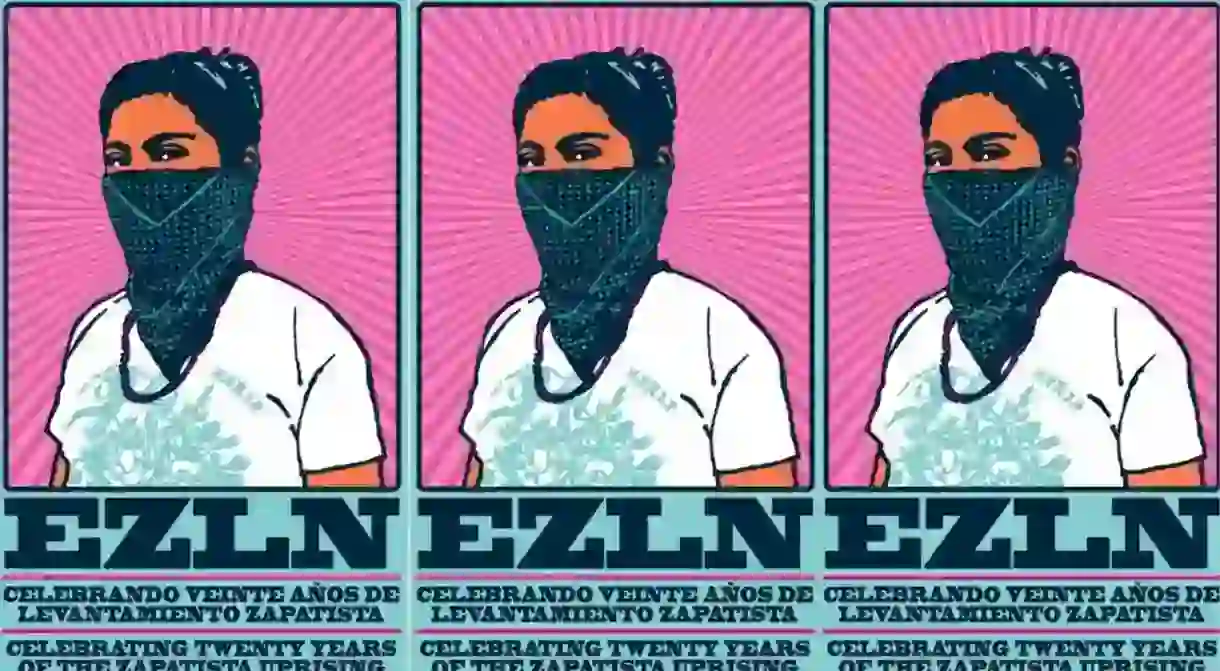Meet Mexico’s Zapatista Rebels Fighting for Indigenous Rights

Mexico’s Zapatista Army of National Liberation (known simply as the Zapatistas, or by their Spanish acronym EZLN) are the revolutionary leftist rebels that took the world by surprise in the ’90s, after leading a militant uprising in Chiapas and declaring war on the Mexican state in demand of indigenous rights. Here’s everything you need to know about them.
Who are the Zapatistas?
Named for the agrarian reformer Emiliano Zapata, who led the Liberation Army of the South during the Mexican Revolution, the Zapatistas are primarily made up of rural indigenous people from Chiapas. While they were launched into the international spotlight after their 1994 uprising, they’ve supposedly been around since the early ’80s.

Ideologically speaking, they take an anti-Mexican government, anti-globalisation stance and even have their own unique ideological category: Neozapatismo. This brings together aspects of traditional Mayan beliefs with various degrees of borderline anarchical, Marxist and libertarian socialist views. The overarching ideals of the Zapatistas have always been centered around the struggle for democracy, indigenous autonomy over local resources and land reform in Chiapas, with a slogan that clearly expresses that: ‘Para todos todo, para nosotros nada’ (‘For everyone, everything. For us, nothing.’)
However, it’s arguably their public image rather than their ideologies which gets them the most attention, known as they are for their balaclava-donning, nom de guerre-using tendencies, particularly in the cases of Comandanta Ramona and Subcomandante Marcos (now known as Subcomandante Insurgente Galeano).

The Zapatista Uprising
Timed to coincide with the announcement of NAFTA on January 1, 1994, a deal Zapatistas believed would ultimately widen the economic breach in Chiapas, some 3000 rebels staged the violent uprising that was to draw the world’s attention to their impoverished but political southern state. Towns and villages were seized, prisoners were freed and military buildings were burned, but after just 12 days of fighting, military involvement led to a ceasefire being declared and early-stage peace talks, negotiated by the Catholic church, began.
However, the initial peace talks, in which the Zapatistas wanted greater political autonomy for the indigenous people of Chiapas, land reform and redistribution, and a challenge to the practically one-party rule of the PRI, ultimately broke down.

During this period of rebellion, which was the first time the Zapatistas had gone public with their demands and ideologies, they also issued their First Declaration of Revolutionary Laws. This declaration was particularly progressive for its inclusion of the Women’s Revolutionary Law, which outlined women’s right to participate in revolutionary and political struggles, work and make decisions about their own bodily autonomy, healthcare and education, among other things.
It was only in February 1996, and after the revelation of Subcomandante Marcos’ real identity along with an ill-calculated decision to wage an offensive against him and other key Zapatistas, that an agreement was finally reached between the Zapatistas and President Zedillo. The success was short-lived though, and the San Andrés Accords were rejected by the president in December of that year with covert anti-Zapatista operation continuing throughout Zedillo’s presidency. One of the most brutal attacks took place in 1997, when government-funded forces led a massacre in the town of Acteal – pregnant women and children were the principal casualties.

The Zapatistas in recent years
In 2001, with the arrival of Vicente Fox as president, the EZLN led a march on Mexico City to ask for the implementation of the previously cast aside San Andrés Accords, which had about as much success as the first attempt. As a result, the Zapatistas implemented their plans without government support in 2003, creating 32 autonomous municipalities in Chiapas.

Nowadays, some municipalities in Chiapas remain under EZLN control, largely overlooked by the Mexican government. As reported by the BBC, these communities have their own (poorly-equipped) health clinics, and women are granted a far more equal role in the society than in most indigenous communities, yet poverty remains a prevailing factor.
It could be said that 2017 saw the most shocking turn of events in the recent history of the Zapatistas, as they officially endorsed a presidential candidate, the indigenous woman María de Jesús ‘Marichuy’ Patricio, for the 2018 election.

Zapatistas and the Media
In recent times, the Zapatistas have focused on education and savvy public relations to promote their ideology, in particular by way of Mexican newspaper La Jornada.
The movement has also been adopted by mainstream pop culture, with the aptly named US band Rage Against the Machine using the Zapatistas’ iconic red star symbol on stage in concert. Mexican ska group Los de Abajo also openly support them and French-Spanish singer Manu Chao had a song for the EZLN on his 2002 album. Additionally, some of their key players have become cult figures in their own right, including Subcomandante Marcos, whose image is plastered across most EZLN villages (alongside Che Guevara) and the deceased Comandanta Ramona, who once had dolls styled after her in Chiapas.














